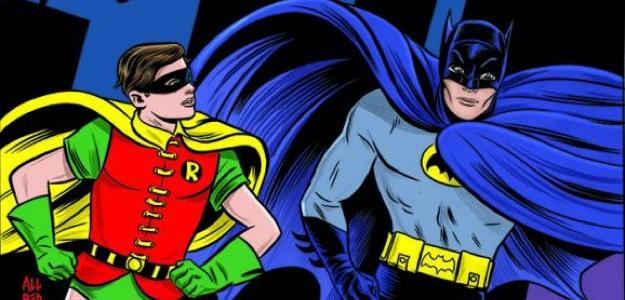 There was a time, back in the hallowed days of our youth, where the only way to see the adventures of our favorite superheroes in motion was to watch episodes of Spider-Man and His Amazing Friends (or, if you’re younger, X-Men on Saturday mornings). These days, superheroes are such big businesses, you can’t make it through a summer blockbuster season without bumping into at least two. Today, DC Comics is planning to bring superhero lovers back to comic books, but adapt them to the interactive, digital age with the launch of what DC Entertainment is calling DC².
There was a time, back in the hallowed days of our youth, where the only way to see the adventures of our favorite superheroes in motion was to watch episodes of Spider-Man and His Amazing Friends (or, if you’re younger, X-Men on Saturday mornings). These days, superheroes are such big businesses, you can’t make it through a summer blockbuster season without bumping into at least two. Today, DC Comics is planning to bring superhero lovers back to comic books, but adapt them to the interactive, digital age with the launch of what DC Entertainment is calling DC².
A new program within the company’s already successful digital comics initiative – which publishes new material every weekday, including Adventures of Superman, Batman: Legends of The Dark Knight, and Injustice: Gods Among Us based on the video game – DC² allows digital comics to become more interactive for the reader. New features include changing the perspective on particular panels and, in the case of the “DC² Multiverse” program, turning the comic into a Choose Your Own Adventure-style story where the reader is in charge of the direction of events.
“Digital comics have proven to be a driving force in attracting new readers, in fact, since the onset of Same-Day-Digital our print and digital sales have both risen by double and triple digits, respectively,” DC Comics Co-Publisher Jim Lee said in the official announcement. “With Digital-First titles we’ve created a successful formula of pairing comics with other media forms like TV shows and video games. [These new] announcements demonstrate how we can tie innovations that organically fit and enhance comics – for example with Batman: Arkham Origins you can choose the destiny of your character by playing the game and reading the comic.”
DC Entertainment head honcho Diane Nelson also noted that the new launch adds to some of the company’s most extension content offerings. “DC² and DC² Multiverse leverages technology to make iconic characters like Superman, Wonder Woman, Batman, and Green Lantern even more relevant through highly interactive storytelling.”
DC² will debut in the much-anticipated Batman ’66, an upcoming new series based upon the 1960s TV show starring Adam West, with “dynamic artwork features [that] will bring the show’s action and retro attitude to life for comic readers,” according to the company. The Multiverse sub-program will then appear in the Batman: Arkham Origins digital series, adding the opportunity for readers to explore multiple options during reading and enjoy “action sounds and the ability to integrate a soundtrack” while reading. Finally, those Zap! Boom! Pow! illustrations be be a little more than just random onomatopoeias.


